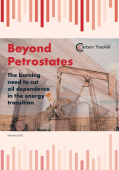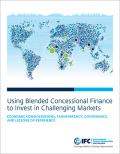
This report focuses on the 40 countries with the greatest fiscal dependence on oil and gas revenues – the petrostates. These are the most oil and gas-reliant countries (as a % of GDP) and are predominantly in the Middle East, North and West Africa, and South America.

The information in this research has been organised into synthesis narratives accompanied by a series of tables that capture the characteristics of each NbS applied to each landscape to achieve agricultural production; climate (mitigation and adaptation), conservation (land, water, biodiversity) and other co-benefits.
This guide serves to assist stakeholders in monitoring tree-based restoration, with a focus on trees outside forests, such as trees on agricultural and pastoral landscapes and within cities and towns—using a Collect Earth mapathon approach.

This report examines IFC’s two decades of experience supporting pioneering projects with blended concessional finance. The report addresses issues such as why and when concessional finance is appropriate to support private sector projects; the key transparency, access, and governance processes required to implement projects efficiently and effectively; the principles for selecting and structuring projects; how to use blended concessional finance to invest in lower-income countries; and the different ways of structuring concessional finance facilities used by DFIs.
This report aims to support growth of the field of gender-smart climate investment by raising awareness of an integrated gender and climate lens, building the case for mainstreaming gender-smart climate finance, and showcasing the versatility, impact or promise of this approach through examples of direct deals and projects that merge gender and climate objectives
